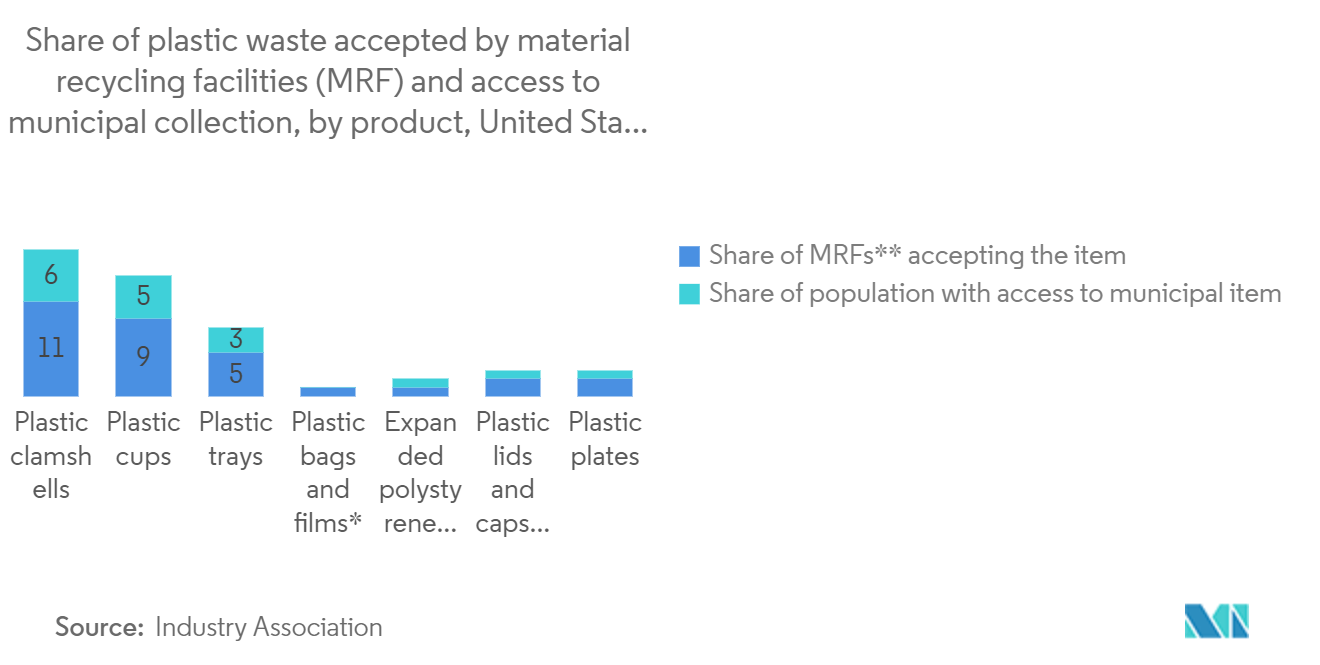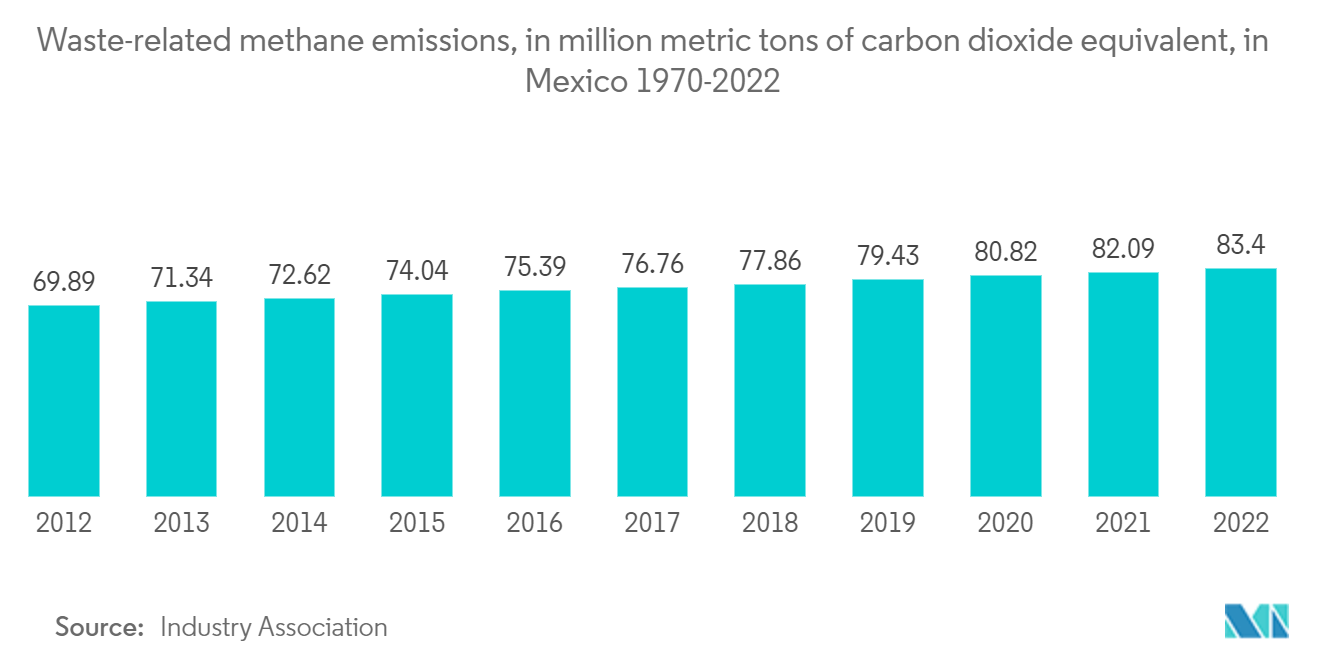Market Trends of North America Solid Waste Management Industry
Booming Plastic segment
- In North America, the plastic waste segment has gained increasing attention as efforts are being made to address the challenges associated with plastic pollution.
- Plastic waste generation in North America is substantial, with a significant portion ending up in landfills or improperly disposed of in the environment. To combat this issue, various strategies and initiatives have been implemented to reduce plastic waste, promote recycling, and encourage the use of more sustainable alternatives.
- One key aspect of managing plastic waste is recycling. Recycling programs have been established across North America to divert plastic waste from landfills and promote the circular economy. These programs aim to collect, sort, and process different types of plastic for reuse in manufacturing new products. Recycling facilities play a crucial role in this process by turning plastic waste into valuable resources.
- In addition to traditional recycling, advancements in technology have led to the development of innovative plastic recycling methods. This includes technologies like chemical recycling, which can break down plastic waste into its basic components, allowing for the creation of new plastic products. These innovations provide opportunities to increase plastic recycling rates and reduce the reliance on virgin plastic production.
- Another important aspect of addressing the plastic waste segment is reducing single-use plastics. Single-use plastics, such as plastic bags, straws, and utensils, contribute significantly to plastic waste. Many cities and states in North America have implemented or are considering bans or restrictions on single-use plastics to reduce their environmental impact.
- Furthermore, efforts are being made to promote the use of more sustainable alternatives to plastic. This includes the development and utilization of biodegradable and compostable plastics, as well as the promotion of reusable products. By encouraging the adoption of these alternatives, the consumption of single-use plastics can be reduced, leading to a decrease in plastic waste generation.
- Public awareness and education campaigns also play a crucial role in addressing the plastic waste segment in North America. These campaigns aim to inform the public about the environmental impact of plastic waste, promote responsible waste management practices, and encourage individuals to make sustainable choices in their daily lives.
- Government regulations and policies are instrumental in shaping the plastic waste segment. North American countries have implemented various measures to address plastic pollution, including extended producer responsibility programs, which hold manufacturers accountable for the end result.

Mexico holds a prominent position in the market
- Mexico’s new waste management policies require municipalities and institutions to develop and implement waste management programs for the essential solid waste management function.
- These programs aim to reduce the generation of waste, foster a waste culture that can be environmentally responsible, recycle the waste that has the potential to be recycled, and manage and dispose of the waste in the least environmentally damaging way possible.
- In Mexico, municipalities and various organizations face the challenge of developing and implementing waste management programs, but due to a lack of experience in this area, Mexico’s situation is unique.
- Based on SEMARNAT's diagnosis, Mexico has an estimated urban solid waste generation rate of 0.954 kg per capita per day, and the total amount of solid waste generated is estimated to be 120.128 tons per year.
- Of the solid urban waste collected, 31.6% is waste that can be used, 46.2% is organic waste, and 22.3% is other waste. Collecting 100.751 tons of waste per day is the national coverage, which is 83.87%.
- Waste transfer in Mexico takes place in 127 facilities in 112 municipalities across 23 states, 49.61 percent of which are in municipalities with a population over 100,000.
- Solid waste collection centers are in operation in 63 municipalities across 19 states.
- Waste separation takes place in 144 municipalities across 23 states, including 16 sites in Mexico City.
- About 5.281 tons of separate waste (both organic and inorganic) are collected daily, which represents about 5 percent of total waste collected in Mexico.
- 2,062 tons of separated waste in Mexico correspond to organic waste, while 3,219 tons of inorganic waste are collected.
- 47 waste treatment plants are in operation, which perform the following processes: separation or recycling, crushing, compaction, composting, and digestion.
- Given the current waste collection, separation, treatment, and recycling infrastructure in Mexico, there is still potential for US-made products, services, and technologies to be sold directly to municipal solid waste suppliers and contractors in Mexico.
- All these factors are contributing to the demand for waste management equipment in Mexico.


